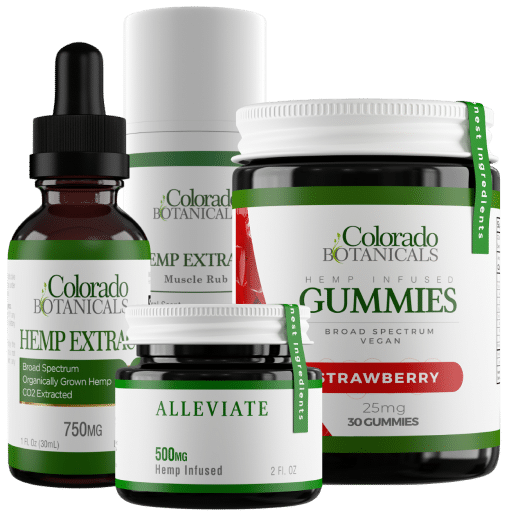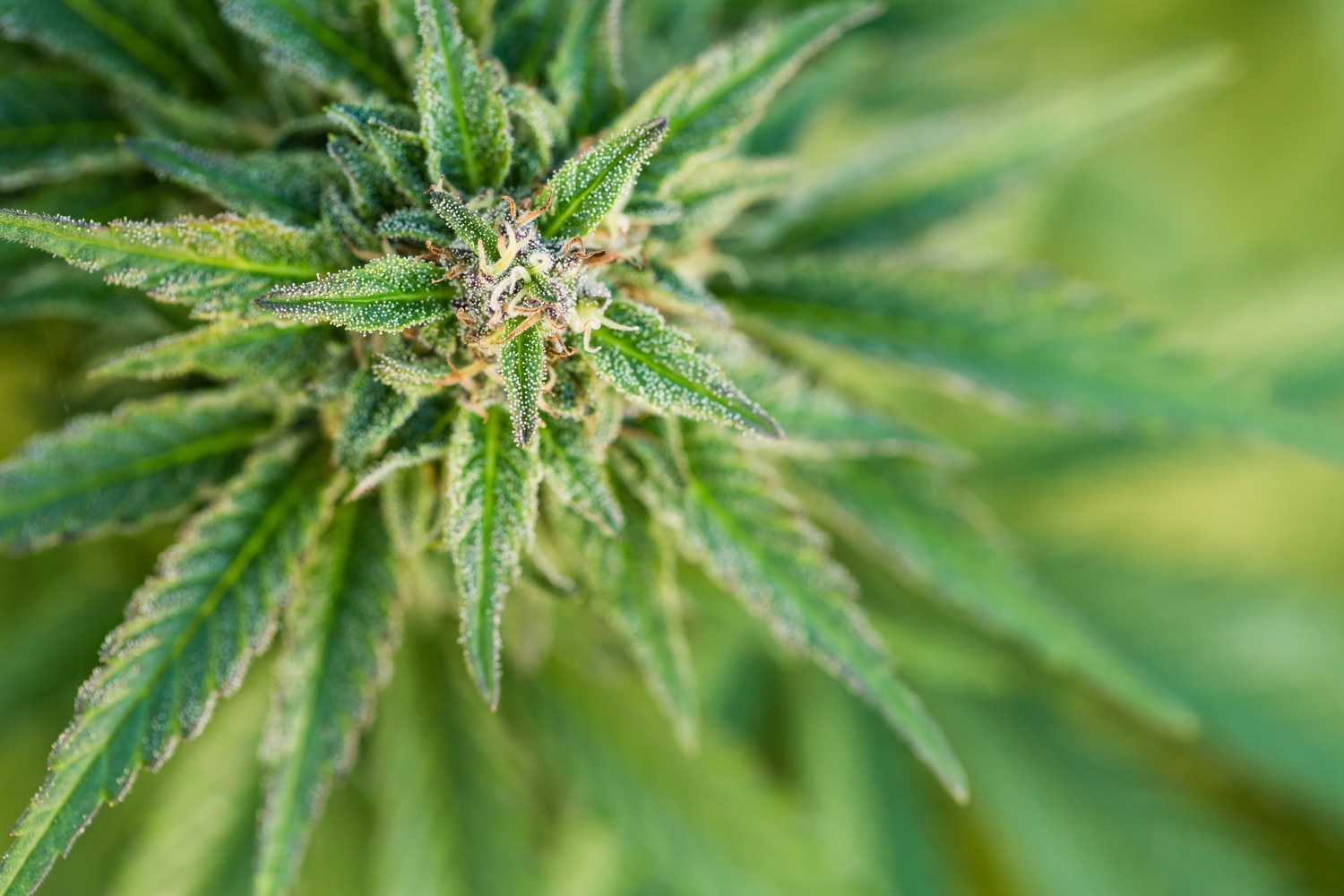CBD, THC, CBN, CBG – those are just a few cannabinoids gaining mainstream traction. We know what they do and where they come from. But what are cannabinoids? What role do cannabinoids play in nature and human consumption?
Whether you’re interested in cannabis plant botany, medicine, or recreational topics, it’s crucial to understand the mystery behind these compounds. Let’s dive into the fantastic realm of this relatively unexplored cannabis topic and explain everything that has to do with what are cannabinoids.
What Are Cannabinoids?
Cannabinoids are chemical compounds that directly or indirectly interact with the body’s endocannabinoid receptors. While these dynamics vary from one cannabinoid to another, the core mechanism of action is similar.
Although cannabis Sativa L. is the only plant source of cannabinoids, it’s not the only place you’ll find them. Next, we’ll explore the different cannabinoid categories.
Phytocannabinoids
Phytocannabinoids are naturally found in cannabis. The prefix “phyto” means “plant-related” (or some variation), hence the name.
For most of us, phytocannabinoids need little introduction. Cannabidiol (CBD) and tetrahydrocannabinol (THC) are both key examples. But there are over 100 known cannabinoids in the plant Cannabis Sativa L.
Endocannabinoids
Although we’re somewhat focused on phytocannabinoids, endocannabinoids arguably play a more consistent role in our daily health. “Endo” means “internal,” so endocannabinoids are essentially internal cannabinoids that our bodies naturally produce.
We’ll cover these in more detail shortly.
What Are Some Examples of Cannabinoids?
There are over 100 known cannabinoids in the cannabis plant, although none have psychoactive effects comparable to THC. Still, these compounds play a substantial role in shaping your recreational or medical marijuana experience.
Unfortunately, we can’t cover the complete list, so let’s look at some major and minor cannabinoids produced by the cannabis Sativa plant and beyond.
- CBD (cannabidiol)
- THC (tetrahydrocannabinol)
- CBG (cannabigerol)
- CBN (cannabinol)
- CBC (cannabichromene)
- CBT (cannabicitran)
- CBV (cannabinodivarin)
- CBR (cannabiripsol)
- Anandamide (endocannabinoid)
- 2-AG (endocannabinoid)
What Do Cannabinoids Do?
Whether internal (endocannabinoids) or external (phytocannabinoids), these natural compounds work the same way. They also serve many different functions – most of which, admittedly, we don’t conclusively understand.
However, research unravels the mysteries of cannabinoids, especially their connection to receptors in the peripheral (CB2 receptors) and central nervous system (CB1 receptors).
Without going into too much detail, cannabinoids help regulate various critical functions to maintain homeostasis, according to a 2008 entry in the Journal of Biological Chemistry. “Homeostasis” is a fancy word for “balance.”
When this internal equilibrium is in place, our bodies and minds remain healthy and fully functional. But when thrown off balance, it can lead to many potential health problems.
The study above notes how cannabinoids modulate a variety of internal functions, including:
- Appetite
- Energy
- Metabolism
- Blood sugar
- Insulin resistance
This list is far from complete and doesn’t cover many of the potential benefits of cannabinoids. Let’s look at those next.
What are the Benefits of Cannabinoids?
The medical use of cannabis dates back several millennia. From Crohn’s disease to cancer, claims about the plant’s benefits gave rise to various medicinal products, along with thousands of supplement options.
Every cannabinoid likely offers therapeutic benefits, but we’ll focus on those that received the most attention in recent years.
CBD and Its Benefits
CBD is associated with an extensive list of benefits, supported mainly by preliminary evidence.
Pain Perception
Some evidence suggests CBD may assist with pain perception. A 2021 study in The Journal of Pain examined over 2,700 human participants with fibromyalgia. Those who took CBD reported improvement mild to substantial improvement in chronic pain.
Cardiovascular Health
According to a 2017 study in The Journal of Clinical Investigation, CBD may also promote heart health.
The study looked at a small group of male participants with high blood pressure who took 600mg of CBD every day for seven days. Not only did the men see reduced blood pressure, but they also saw a lower increase when subjected to stress tests.
Granted, the group consisted of nine participants, so it’s far from conclusive.
If you’re looking for high-quality CBD products, Observer’s 2022 Best CBD Oil article is a trustworthy place to start. They’ve listed the top 10 CBD oils to buy. They reviewed dozens of products in the market through blind product testing, where labels and packaging were removed.
THC and Its Benefits
THC remains somewhat controversial. Recreational users appreciate it for its intoxicating impact on the central nervous system. However, some medical consumers have a love-hate relationship with tetrahydrocannabinol.
Psychotropic effects aside, THC has some well-documented benefits.
Chronic Pain
Like CBD, THC may be effective at controlling chronic pain. A massive 2017 review in the National Academies of Sciences, Engineering, and Medicine examined over 10,000 academic studies.
The review discovered a strong correlation between THC, other cannabinoids, and pain management.
Lung Health
Conventional wisdom tells us that smoking harms our lungs. This is true of tobacco, but what about cannabis? A 2012 study in the Journal of the American Medical Association examined that question – and found some surprising results.
The 20-year study followed over 5,000 young adults who smoked high-THC cannabis (a.k.a. “marijuana”), tobacco, or both. While the cigarette smokers unsurprisingly showed decreased lung function, cannabis-only users didn’t. In fact, the researchers discovered that mild to moderate cannabis users experienced increased lung capacity.
Still, the authors warn that chronic, heavy cannabis smoking will likely harm the lungs, so moderation is key. We recommend using vaporizers, edibles, oils, or topicals as an alternative to burning dried flower.
CBG and Its Benefits
Cannabigerol (CBG) is making waves in the supplement community as information about its benefits slowly emerges. Growing interest led to several preliminary studies which support cannabigerol’s potential therapeutic benefits.
Appetite
Many medical conditions or treatments can affect appetites, such as eating disorders or chemotherapy. CBG, however, may help improve appetite.
A 2016 study in Psychopharmacology examined the potential appetite-stimulating effects of CBG on rat subjects.
Once researchers established an appetite baseline, the rats received a steady dose of CBG every three days. The study found that while the volume of food consumption per feeding didn’t change, the frequency of each feeding increased.
Glaucoma
Glaucoma was one of the first conditions to be addressed by medical cannabis – specifically THC. But a 2008 review in the National Library of Medicine indicates that CBG may also play a role.
Specifically, the publication notes the presence of CB1 and CB2 endocannabinoid receptors in the eye. This explains why CBG can bind to those receptors and offers the same therapeutic effects as THC in glaucoma.
CBN and Its Benefits
A newer product on the hemp-derived supplement scene, cannabinol (CBN), has little research to back its benefits. Still, a little is better than none at all, but it should be taken with a grain of salt.
However, what sets CBN apart is that – aside from THC – CBN is the only other known cannabinoid with intoxicating psychoactive effects. However, these effects are so mild that they’re barely noticeable (if at all). However, it can add a little extra boost to THC’s recreational “high.”
Sleep
Like many cannabinoids, CBN is believed to have sedative properties. For the moment, this is primarily anecdotal, save for one old 1975 study published in the journal Karger. The experiment involved five male participants who received CBN, THC, or a mix of both.
CBN alone didn’t appear to make a big difference, but those who took a combination dose noticed increased intoxication, dizziness, and drowsiness compared to the CBN, THC, and placebo groups.
Neuroprotectant
CBN may offer some neuroprotective benefits. One 2005 study by Weydt et al. examined CBN’s effects on amyotrophic lateral sclerosis (ALS) in mice.
CBN was administered beneath the skin through a pump device at 5mg/kg for 12 weeks. The study observed that CBN “…significantly delays disease onset by more than two weeks while survival was not affected.”
In other words, while CBN won’t reverse ALS, it may slow down its progress to buy time for conventional treatment.
CBDA and Its Benefits
CBDA stands for “cannabidiolic acid.” This cannabinoid is essentially CBD but in an unheated acidic form. When heated, CBDA undergoes decarboxylation – a process where the molecular structure loses a “carboxyl group” consisting of one carbon atom, two oxygen atoms, and one hydrogen atom (COOH).
CBDA’s benefits are familiar to CBD consumers since CBDA offers similar therapeutic uses.
Inflammation
CBDA may have anti-inflammatory properties. A 2008 study in Drug Metabolism and Disposition examined THCA and CBDA’s effects on inflammatory responses in cultured cells.
When applied to the cells, both THCA and CBDA showed anti-inflammatory effects. However, CBDA performed better than THCA.
The researchers observed how both cannabinoids acted as COX-2 inhibitors, enzymes responsible for developing compounds that trigger inflammation. Stifling the COX-2, CBDA and THCA could reduce the inflammatory response.
Breast Cancer
Interestingly, the COX-2 inhibition displayed in the above study also profoundly impacted research into CBDA and breast cancer.
A 2014 study by Takeda et al. noted that COX-2 isn’t just a driving force for inflammation. The enzyme also apparently encourages the growth and development of breast cancer (and possibly other cancer) cells.
The experimenters applied raw CBDA to cultured breast cancer cells and noticed how the cannabinoid altered gene expression in combination with the anti-inflammatory effects of COX-2. Ultimately this combined effect slowed the growth of those cultured cells.
However, research in a Petrie dish isn’t comparable to actual human studies.
Do Cannabinoids Have Side Effects?
Yes, cannabinoids have side effects. The adverse reactions vary depending on the cannabinoid (and person) in question.
Without many human trials, it’s challenging to know the negative impact of most cannabinoids. So let’s stick with the most heavily-consumed products: THC and CBD.
THC
From a recreational perspective, many of THC’s side effects are sought after by consumers. However, medical users may not be so keen to experience those results. In some instances, THC’s adverse effects have no recreational benefit either.
According to the National Institute on Drug Abuse, consumption or over-consumption of THC can cause side effects like:
- Impaired memory
- Loss of motor control
- Dizziness
- Confusion
- Drowsiness
- Nausea
- Vomiting
- Headache
- Hallucinations
- Rapid heart rate
- Marijuana use disorder (addiction)
THC’s potential complications are comparatively milder than other drugs, such as alcohol or nicotine. However, it’s essential to approach this cannabis product with extreme caution.
CBD
Although substantially milder than THC due to its non-intoxicating properties, CBD is known to cause some – albeit minor – side effects.
Dr. Peter Grinspoon of Harvard Health Publishing explains that CBD is generally well-tolerated by the human body. Side effects are minor and typically include:
- Drowsiness
- Appetite changes
- Nausea
- Headache
- Diarrhea
However, Grinspoon warns that certain medications may negatively interact with CBD, including blood-thinners and seizure medicines. Patients using these other drugs are at an increased risk of experiencing potentially dangerous side effects.
What are Synthetic Cannabinoids?
Synthetic cannabinoids are artificial cannabinoids meant to mimic the recreational effects of their natural counterparts in cannabis plants. Although they’re easy to find at many head shops and illegal websites, the Food and Drug Administration hasn’t approved their production or use – and for a good reason.
Unlike phytocannabinoids, synthetic cannabinoid products – also known as “K2,” “AK-47,” “Scooby Snacks,” or “spice” – are dangerous and potentially deadly, according to the Centers for Disease Control and Prevention (CDC).
The CDC also explains that, while states try to ban these substances, manufacturers find clever ways to keep lawmakers and regulators off their backs.
Legality aside, don’t consume synthetic cannabinoids.
What are Endogenous Cannabinoids?
Endogenous cannabinoids (endocannabinoids) are neurotransmitters that form a single part of a much more extensive “network” of cannabinoids and receptors that make up the endocannabinoid system.
The two main endocannabinoids are anandamide – which is chemically similar in structure to THC – and 2AG.
But what role do they play? The real question is, what role don’t they play. A 2018 entry in the Journal of Young Investigators further highlights the role of the endocannabinoid system (ECS) in maintaining homeostasis. This, as we’ll discuss next, has far-reaching implications for our health.
How Do Endocannabinoids Work?
Endocannabinoids and phytocannabinoids work the same way. All cannabinoids produce their effects through the CB1 and CB2 receptors in the central and peripheral nervous systems, respectively.
When the body experiences an issue, such as pain or inflammation, it sends out a physical distress signal. The compounds then bind to the endocannabinoid receptors in (or connected to) the affected area to stabilize or relieve the symptoms.
Endogenous cannabinoids play a crucial role in balancing and regulating several vital functions, including:
- Immune system
- Chronic pain relief
- Neuropathic pain relief
- Mood
- Appetite
- Sleep
What to Look for When Buying Cannabinoids?
Cannabinoid extracts are available everywhere, but this can be a blessing and a curse. There are a lot of amazing vendors out there, but you’ll also find plenty who don’t fit the bill.
So how do you tell if a product is worth trying? Keep a lookout for the following benchmarks.
Company Reputation
Having a solid background with an even stronger positive customer response helps credibility.
While there’s nothing inherently wrong with giving up-and-coming vendors a chance, you’re more likely to enjoy a product that’s been in the market for a while.
Colorado Botanicals, for instance, has several years of experience in the CBD scene. This allowed them to perfect a proprietary CO2 extraction process for natural cannabinoid and terpene retention. They’re also working hard on new enhanced CBD and CBG supplement products.
Other vendors are also following that same route, although they still make up a smaller – albeit growing – portion of the cannabinoid supplement market.
Third-Party Lab Reports
Most cannabis plant extract companies stand by their products and have no problem proving that through independent analyses.
Comprehensive lab reports provide verifiable proof that what you consume isn’t just safe but also exactly as advertised.
If a vendor doesn’t offer links to third-party lab reports, you should consider looking elsewhere.
Customer Reviews
Any company can say their cannabinoid products are excellent, revolutionary, or other marketing terms. But if you want genuine, unbiased reviews, the best source comes from individual customers.
Sites like Reddit or TrustPilot are full of people who tried the products. They won’t pull any punches when it comes to honest criticisms.
Return Policy
Another indication of quality is a company’s return policy. Generous guarantees are typically an indication that the vendor doesn’t expect many returns. On the other hand, companies with restrictive return policies may care more about securing a sale than making you happy.
Summary: What are Cannabinoids and Their Effects
There are over 100 cannabinoids inside the cannabis plant, but they’re far from the only ones. Endocannabinoids perform a fundamental role that can be supplemented or supported with phytocannabinoids like CBD, THC, CBG, CBN, CBDA, etc.
Synthetic cannabinoids also exist, but they don’t work the same way as their natural cannabis plant counterparts. Their effects are simulated and don’t rely on natural cannabinoid receptors – not to mention they can be deadly.
Besides CBD’s effectiveness against severe childhood epilepsy, cannabinoids aren’t backed by complete clinical human trials. This deficiency is unfortunate, to say the least.
Hopefully, the multitude of preliminary studies will eventually lead to more conclusive human research in the near future.
Sources
Boehnke, K. F., Gagnier, J. J., Matallana, L., & Williams, D. A. (2021). Cannabidiol use for fibromyalgia: Prevalence of use and perceptions of effectiveness in a large online survey. The Journal of Pain, 22(5), 556–566. https://doi.org/10.1016/j.jpain.2020.12.001
Brierley, D. I., Samuels, J., Duncan, M., Whalley, B. J., & Williams, C. M. (2015). Neuromotor tolerability and behavioural characterisation of cannabidiolic acid, a phytocannabinoid with therapeutic potential for anticipatory nausea. Psychopharmacology, 233(2), 243–254. https://doi.org/10.1007/s00213-015-4100-1
Centers for Disease Control and Prevention. (2018, April 24). Synthetic cannabinoids: What are they? what are their effects? Centers for Disease Control and Prevention. Retrieved March 2, 2022, from https://www.cdc.gov/nceh/hsb/chemicals/sc/default.html
Grinspoon, MD, P. (2021, September 24). Cannabidiol (CBD)-what we know and what we don’t. Harvard Health. Retrieved March 2, 2022, from https://www.health.harvard.edu/blog/cannabidiol-cbd-what-we-know-and-what-we-dont-2018082414476
The health effects of cannabis and cannabinoids. (n.d.). Retrieved March 2, 2022, from https://www.nap.edu/resource/24625/Cannabis_chapter_highlights.pdf
Jadoon, K. A., Tan, G. D., & O’Sullivan, S. E. (2017). A single dose of cannabidiol reduces blood pressure in healthy volunteers in a randomized crossover study. JCI Insight, 2(12). https://doi.org/10.1172/jci.insight.93760
Karniol, I. G., Shirakawa, I., Takahashi, R. N., Knobel, E., & Musty, R. E. (1975). Effects of δ9-tetrahydrocannabinol and cannabinol in man. Pharmacology, 13(6), 502–512. https://doi.org/10.1159/000136944
Kunos, G., Osei-Hyiaman, D., Liu, J., Godlewski, G., & Bátkai, S. (2008). Endocannabinoids and the control of energy homeostasis. Journal of Biological Chemistry, 283(48), 33021–33025. https://doi.org/10.1074/jbc.r800012200
MediLexicon International. (n.d.). Endocannabinoids: What are they and what do they do? Medical News Today. Retrieved March 2, 2022, from https://www.medicalnewstoday.com/articles/endocannabinoid
Nadolska K, Goś R. Mozliwości zastosowania kannabinoidów w leczeniu jaskry [Possibilities of applying cannabinoids’ in the treatment of glaucoma]. Klin Oczna. 2008;110(7-9):314-7. Polish. PMID: 19112869.
Pletcher, M. J., Vittinghoff, E., Kalhan, R., Richman, J., Safford, M., Sidney, S., Lin, F., & Kertesz, S. (2012). Association between marijuana exposure and pulmonary function over 20 years. JAMA, 307(2), 173. https://doi.org/10.1001/jama.2011.1961
Takeda, S., Misawa, K., Yamamoto, I., & Watanabe, K. (2008). Cannabidiolic acid as a selective cyclooxygenase-2 inhibitory component in Cannabis. Drug Metabolism and Disposition, 36(9), 1917–1921. https://doi.org/10.1124/dmd.108.020909
Takeda, S., Okazaki, H., Ikeda, E., Abe, S., Yoshioka, Y., Watanabe, K., & Aramaki, H. (2014). Down-regulation of cyclooxygenase-2 (COX-2) by cannabidiolic acid in human breast cancer cells. The Journal of Toxicological Sciences, 39(5), 711–716. https://doi.org/10.2131/jts.39.711
U.S. Department of Health and Human Services. (2021, June 7). Marijuana drugfacts. National Institutes of Health. Retrieved March 2, 2022, from https://nida.nih.gov/publications/drugfacts/marijuana
Weydt, P., Hong, S., Witting, A., Möller, T., Stella, N., & Kliot, M. (2005). Cannabinol delays symptom onset in SOD1 (G93A) transgenic mice without affecting survival. Amyotrophic Lateral Sclerosis, 6(3), 182–184. https://doi.org/10.1080/14660820510030149









